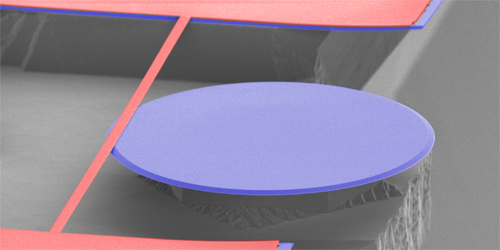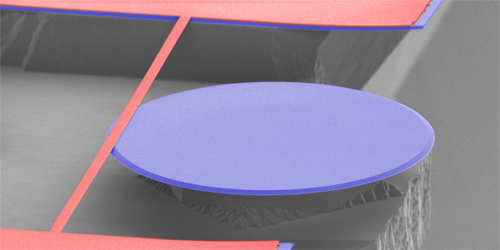Position Detector Approaches the Heisenberg Limit
Tracking the exact location of an object is important in gravitational-wave detectors and optical cooling techniques. However, quantum physics imposes certain limits on the measurement precision. Tobias Kippenberg and his colleagues at the Swiss Federal Institute of Technology in Lausanne have devised an optomechanical device that measures the displacement of a tiny vibrating bar at room temperature with an uncertainty near the so-called Heisenberg limit. The precision of the sensor is nearly 10,000 times smaller than the zero-temperature fluctuations (zero-point motion) of the bar.
The Heisenberg uncertainty principle says—in practical terms—that any measurement of an object’s position will unavoidably give it a push that disturbs its momentum. To minimize this backaction, researchers have developed systems that couple the position of an object with the light field from an optical cavity.
The displacement sensor designed by Kippenberg’s team measures the position of a nanometer-wide bar using an optical cavity in the form of a disk with micrometer diameter. The researchers etch these components from a single silicon chip, allowing them to place the bar within 25 nanometers of the edge of the disk. At this close proximity, the bar interacts with the evanescent near field of the cavity, and the bar’s displacement can be determined by observing the phase of the cavity field. Following an earlier demonstration at cryogenic temperatures, the team finds the room-temperature uncertainty of the sensor is within a factor of 60 of the Heisenberg limit. With some improvement, the device could enable quantum feedback protocols that allow a mechanical system to be prepared in a desired quantum state.
This research is published in Physical Review Applied.
–Michael Schirber
Michael Schirber is a Corresponding Editor for Physics.





